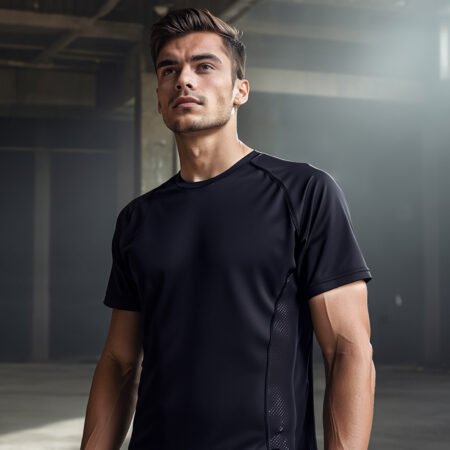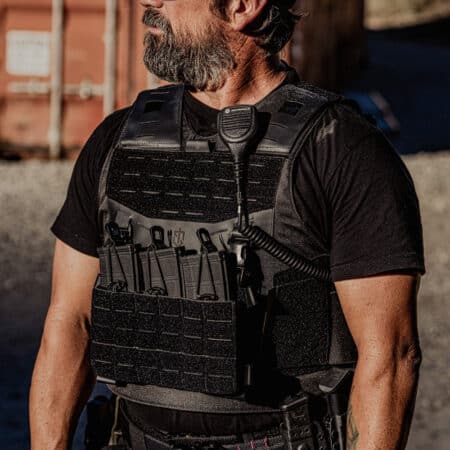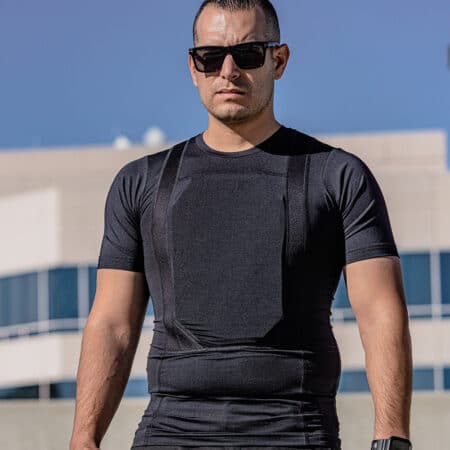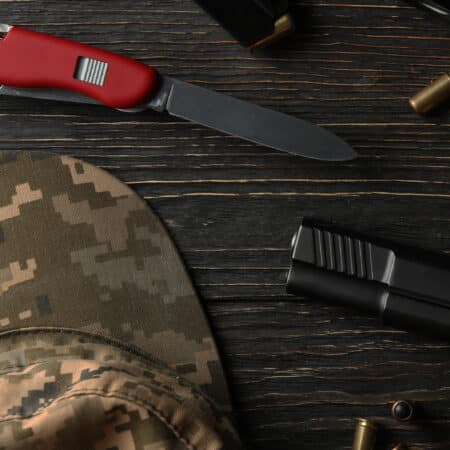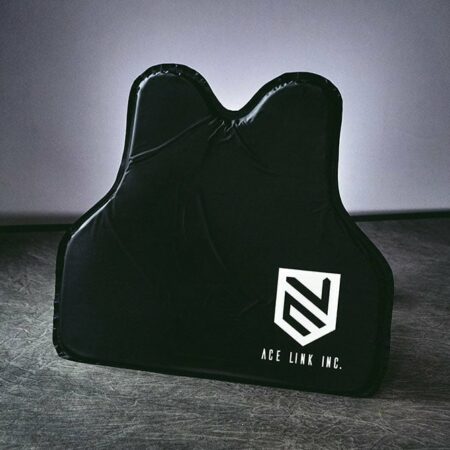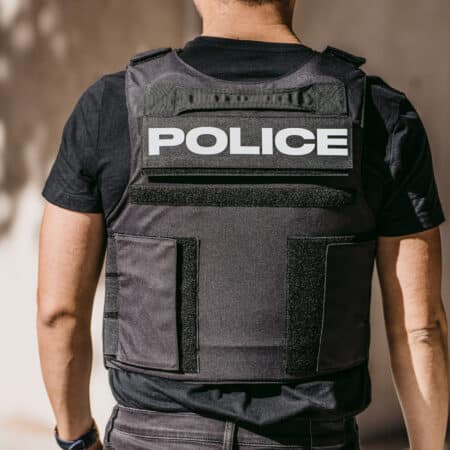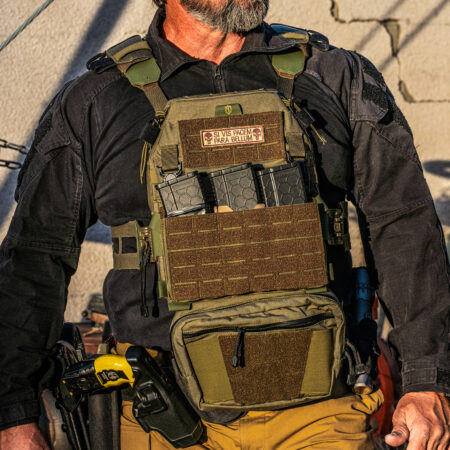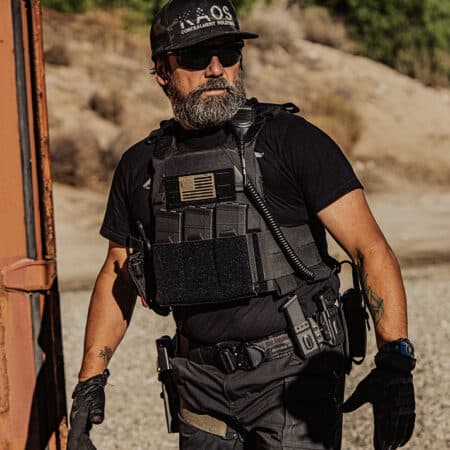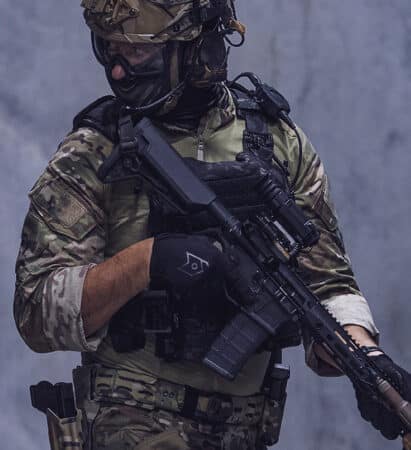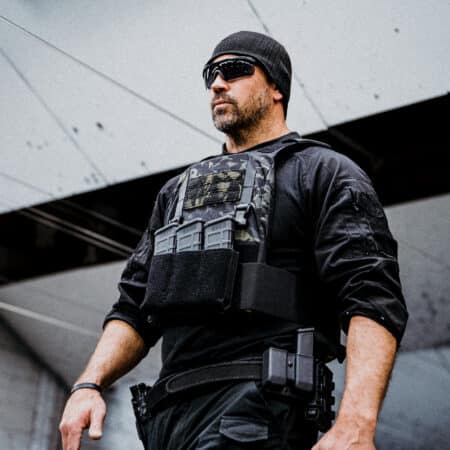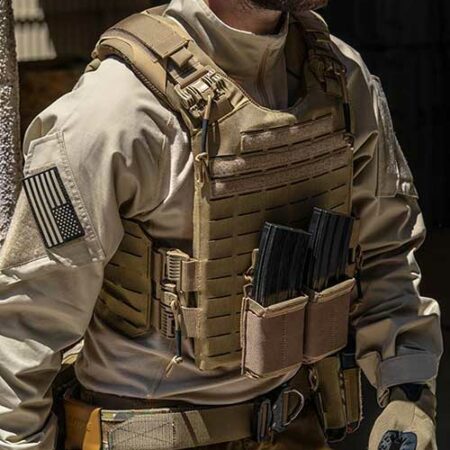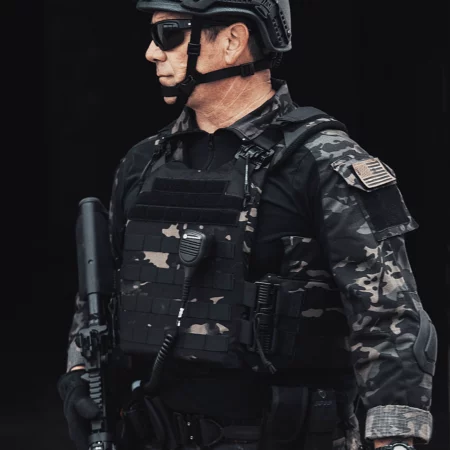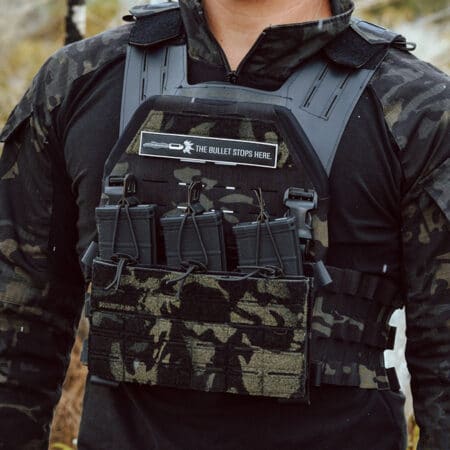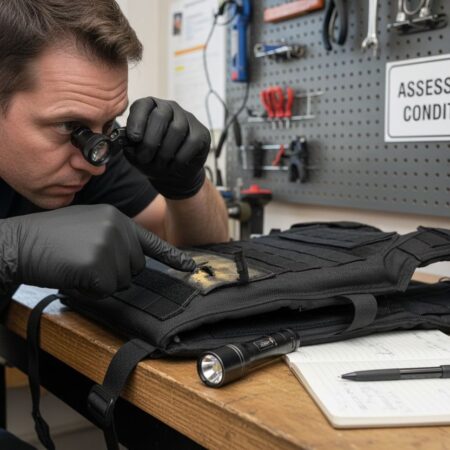- Table of Contents
- Quick Summary
- What are Antistab Vest Materials and Their Purpose?
- Why Antistab Vest Materials Matter for Personal Safety
- How Antistab Vest Materials Work: A Breakdown
- Key Features and Innovations in Antistab Vest Materials
- Upgrade Your Safety with Proven Antistab Vest Materials
- Frequently Asked Questions
- Recommended
Antistab vest materials are changing the rules when it comes to personal safety for law enforcement and security professionals. Most people assume body armor is mainly for stopping bullets. But here is a big number to consider. DSM Dyneema’s Anti-Stab Technology delivers vests that are about 25 percent thinner and lighter than standard options and still block knife attacks. That means the real advantage is not about more bulk or weight. It is about smarter material science that keeps you safer and more agile than ever before.
Table of Contents
- What Are Antistab Vest Materials And Their Purpose?
- Why Antistab Vest Materials Matter For Personal Safety
- How Antistab Vest Materials Work: A Breakdown
- Key Features And Innovations In Antistab Vest Materials
Quick Summary
| Takeaway | Explanation |
|---|---|
| Antistab vests protect against sharp weapon attacks. | These specialized materials resist punctures and slashes from knives and other edged implements, offering crucial safety. |
| Key materials include UHMWPE and aramid composites. | These advanced fibers create strong, flexible networks that disperse impact forces and prevent direct penetration. |
| Antistab technology enhances personal safety. | They provide a direct investment in protection, critical for professionals in high-risk environments facing knife threats. |
| Lightweight design improves wearability. | Modern vests are designed to be thinner and lighter, enhancing mobility and comfort without sacrificing defense performance. |
| Innovative features adapt to dynamic threats. | New technologies integrated into antistab vests allow for breathability and potential additional functionalities like temperature regulation. |
What are Antistab Vest Materials and Their Purpose?
Antistab vest materials represent critical protective technologies designed to shield wearers from sharp weapon threats, offering specialized defense beyond traditional ballistic protection. Unlike standard body armor focused on stopping bullets, these materials are engineered specifically to resist puncture and slashing attacks from knives, improvised weapons, and other edged implements.
Core Purpose of Protective Materials
The fundamental goal of antistab vest materials is preventing penetration through strategically constructed fabric and fiber systems. Advanced protective technologies demonstrate that these materials must simultaneously maintain critical properties:
- High tensile strength to resist blade penetration
- Flexibility for wearer mobility
- Lightweight construction for extended wear
- Ability to disperse and redistribute potential impact forces

Professionals in high-risk environments like law enforcement, corrections, and security require protection that goes beyond standard ballistic solutions. DSM Dyneema’s Anti-Stab Technology represents a breakthrough, enabling vest designs approximately 25% thinner and lighter than traditional protective materials while maintaining superior defensive capabilities.
Material Engineering Principles
Modern antistab vest materials leverage advanced fiber technologies, primarily using ultra-high molecular weight polyethylene (UHMWPE) and aramid composites. These engineered materials create intricate structural networks that can trap and deflect sharp object edges before they penetrate the protective layer.
The key innovation lies in how these materials interact with potential threats. When a knife or sharp implement attempts to puncture the vest, the tightly woven fibers work collectively to:
- Catch and spread the cutting force across multiple fiber strands
- Create resistance through complex interlocking material structures
- Prevent direct linear penetration through strategic material design
By understanding these advanced material properties, read more about our stab-resistant panels, professionals can select optimal protection tailored to their specific operational requirements, ensuring maximum safety without compromising mobility or comfort.
To help clarify the major materials used in antistab vests, here is a comparison table featuring their key characteristics and functions.
| Material | Primary Function | Key Properties |
|---|---|---|
| UHMWPE (Ultra-High Molecular Weight Polyethylene) | Disperses and absorbs impact from sharp weapons | Extremely strong, lightweight, flexible |
| Aramid Composites | Deflects, resists, and traps penetrating blades | High tensile strength, heat resistant, pliable |
| Nano-engineered Fibers | Reinforce protection at the molecular level | Adaptive, advanced resistance, lightweight |
| Multi-layered Composites | Combine different fiber types for optimal defense | Enhanced stab resistance, flexibility |
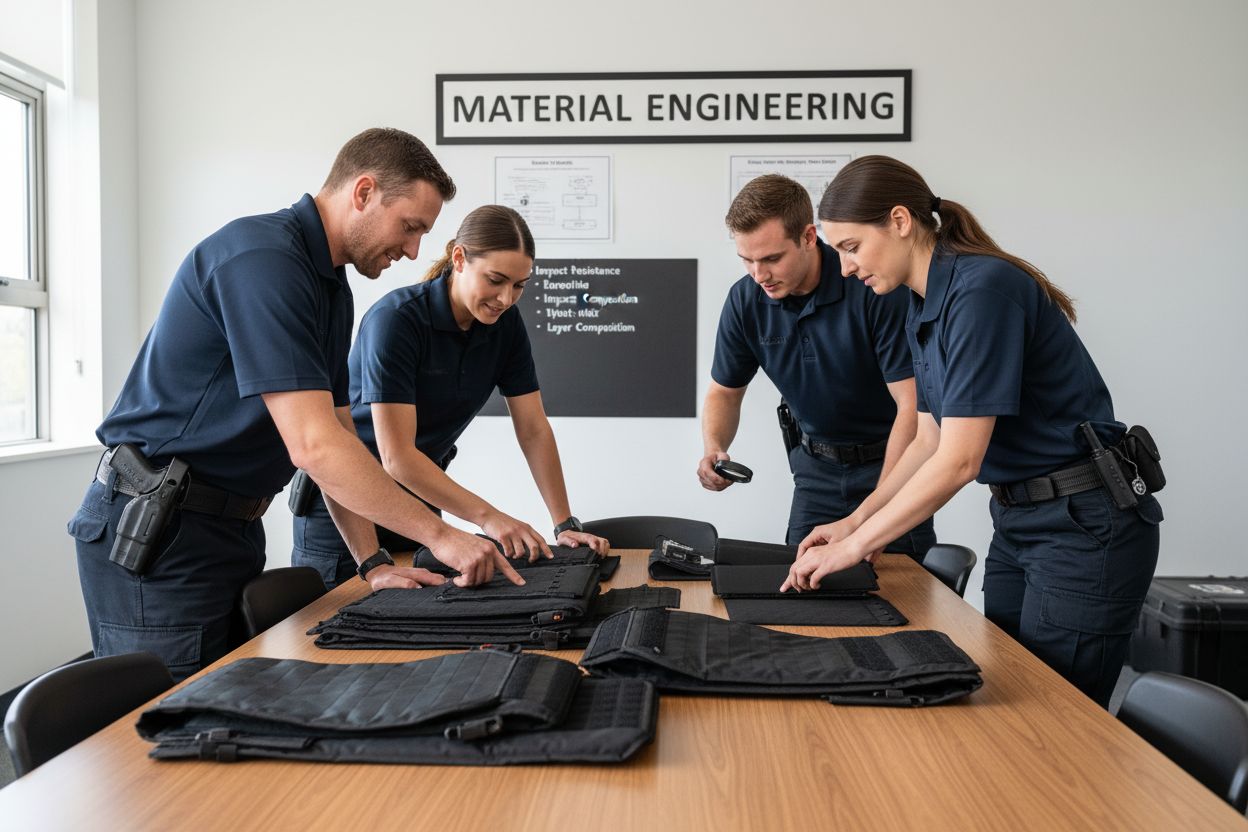
Why Antistab Vest Materials Matter for Personal Safety
Personal safety in high-risk environments demands sophisticated protective technologies that go beyond traditional defensive solutions. Antistab vest materials represent a critical advancement in personal protection, addressing emerging threats that conventional body armor cannot effectively mitigate.
Evolving Threat Landscape
Modern security challenges have dramatically transformed, with edged weapon attacks becoming increasingly prevalent across professional and civilian contexts. Research from the International Association of Chiefs of Police indicates that knife-related incidents have surged in urban environments, making comprehensive protection more essential than ever.
Key threat scenarios where antistab materials become crucial include:
- Law enforcement confrontations
- Correctional facility interactions
- Security personnel deployments
- High-risk urban patrol environments
- Personal protection in unpredictable settings
Antistab Vest Material Performance
The significance of antistab vest materials extends far beyond simple equipment specification. These specialized materials represent a direct investment in human life protection, offering critical defense mechanisms that can prevent catastrophic injuries in split-second encounters.
When traditional body armor fails against sharp implements, the consequences can be fatal.

Antistab technologies interrupt potential penetration through sophisticated material engineering, creating multiple layers of defensive resistance. Our dual-protection vest designs demonstrate how modern materials can provide comprehensive protection against both ballistic and edged weapon threats.
Psychological and Operational Confidence
Beyond physical protection, antistab vest materials provide psychological reassurance for professionals operating in unpredictable environments. Knowing that one’s protective gear can withstand potential knife attacks allows personnel to maintain focus, make calculated decisions, and perform critical tasks without constant threat anxiety.
The advanced materials used in modern protective vests not only stop potential attacks but also:
- Distribute impact forces across multiple fiber layers
- Maintain flexibility for natural movement
- Offer lightweight, breathable protection
- Reduce potential traumatic injury risks
By integrating cutting-edge material science with practical defensive requirements, antistab vest technologies represent a critical evolution in personal safety equipment.
How Antistab Vest Materials Work: A Breakdown
Antistab vest materials function through sophisticated engineering principles that transform traditional protective gear into advanced defensive systems. These specialized materials represent a complex interplay of material science, physics, and strategic design aimed at neutralizing sharp weapon threats.
Structural Resistance Mechanisms of Antistab Vest
Advanced protective technologies reveal that antistab materials operate through multiple intricate defense strategies. The core principle involves creating a material structure that can effectively disrupt and redirect potentially lethal knife or sharp object attacks.
The primary resistance mechanisms include:
- Energy dispersion across multiple fiber layers
- Molecular interlocking of specialized fibers
- Immediate compression and redistribution of impact forces
- Blunting and catching sharp weapon edges
Fiber Technology and Material Composition
Modern antistab vest materials leverage ultra-high molecular weight polyethylene (UHMWPE) and advanced aramid composites. These engineered materials create a complex, tightly woven network designed to trap and neutralize potential penetrating threats before they can breach the protective layer.
When a sharp object attempts to penetrate the vest, the material responds through a series of rapid, synchronized defensive reactions:
- Initial fiber displacement to absorb initial impact
- Molecular realignment to distribute cutting forces
- Immediate fiber tension to prevent linear penetration
- Rapid compression to reduce potential wound depth
Performance Validation and Engineering Principles
Engineers validate these materials through rigorous testing protocols that simulate real-world attack scenarios. Our stab-resistant panels demonstrate how strategic material design can create protective layers that maintain flexibility while offering exceptional defensive capabilities.
The breakthrough in antistab technology lies not just in stopping penetration, but in how the materials intelligently respond to potential threats. By understanding the complex interactions between material structure, force distribution, and molecular behavior, manufacturers can create protective gear that adapts and responds dynamically to various attack vectors.
Key Features and Innovations in Antistab Vest Materials
The landscape of personal protective equipment continues to evolve, with antistab vest materials representing the cutting edge of defensive technology. These innovative materials transcend traditional protective solutions, offering unprecedented levels of safety and performance for professionals operating in high-risk environments.
Advanced Material Composition
Breakthrough research in protective technologies reveals that modern antistab vest materials leverage sophisticated material science to create comprehensive defensive systems. The core innovation lies in developing materials that can dynamically respond to potential threats while maintaining critical performance characteristics.
Key material composition innovations include:
- Nano-engineered fiber structures
- Multi-layered composite designs
- Molecular-level reinforcement techniques
- Adaptive material response mechanisms
- Lightweight yet ultra-strong fiber configurations
Performance Enhancement Technologies
Next-generation antistab vest materials are distinguished by their ability to provide multilayered protection without compromising wearer mobility. Manufacturers now integrate advanced technologies that transform traditional protective gear into intelligent defensive systems.
Critical performance enhancements encompass:
- Improved energy dissipation capabilities
- Enhanced breathability and comfort
- Reduced overall weight without sacrificing protection
- Superior flexibility and range of motion
- Advanced moisture management technologies
Emerging Design Philosophies
The future of antistab vest materials centers on creating holistic protective solutions that adapt to dynamic threat environments. Our concealed armor technology exemplifies this approach, demonstrating how modern materials can provide comprehensive protection while remaining virtually undetectable.
Engineers and material scientists are now focusing on developing vest materials that not only protect against immediate threats but also provide additional functionality. This includes integrating temperature regulation, impact monitoring, and even potential biometric tracking technologies into the protective layer itself.
By continuously pushing the boundaries of material science, antistab vest technologies are transforming from passive protective equipment into active, intelligent defensive systems that can potentially save lives in high-risk scenarios.
The table below organizes the main features and innovations discussed for modern antistab vest materials, providing a concise overview for quick reference.
| Feature/Innovation | Benefit |
|---|---|
| Lightweight Construction | Improved mobility and comfort during extended wear |
| Multi-layered Protection | Enhanced defense against sharp object penetration |
| Breathable Design | Increased comfort and reduced heat retention |
| Adaptive Material Response | Dynamic resistance to various attack types |
| Nano-engineered Fiber Tech | Advanced strength at lower weight |
| Temperature Regulation | Helps maintain comfort in varying environments |
Upgrade Your Safety with Proven Antistab Vest Materials
Reading about how antistab vest materials protect against knife or sharp weapon threats underscores just how important advanced technology is for real-world safety. The article highlighted serious concerns like the rise in edged weapon attacks, the need for comfort and flexibility on the job, and the power of modern materials like UHMWPE and aramid composites. If you operate in unpredictable environments or want to feel secure against both ballistic and stab threats, you cannot afford to trust outdated or untested equipment.
AcelinkArmor.com builds on these proven material innovations, offering a wide selection of stab-resistant panels and concealable armor solutions that deliver the reliable defense and comfort discussed in the article. Take action now to strengthen your personal safety with body armor designed for the threats you actually face. Discover all our trusted tactical protection options at AcelinkArmor.com and get equipped today.
Frequently Asked Questions
What are antistab vest materials made of?
Antistab vest materials are typically constructed using ultra-high molecular weight polyethylene (UHMWPE) and aramid composites. These materials are engineered to create strong, flexible networks that can effectively trap and deflect sharp weapon threats.
How do antistab vest materials prevent knife penetration?
Antistab vest materials prevent knife penetration by utilizing a tightly woven fiber structure that disperses and redistributes the force of an attack. When a sharp object strikes the vest, the fibers catch and spread the cutting force across multiple strands, reducing the likelihood of direct penetration.
What should I consider when choosing an antistab vest?
When choosing an antistab vest, consider key factors like the material’s weight, flexibility, and the level of stab resistance it offers. Look for vests that balance high protection levels with comfort for extended wear, especially in high-risk operational environments.
How do antistab vests enhance psychological confidence?
Antistab vests enhance psychological confidence by providing assurance that protective gear can withstand potential attacks. This sense of security allows wearers to focus on their tasks without the added anxiety of possible knife threats, which is crucial in unpredictable situations.
Are there weight differences between antistab and traditional body armor?
Yes, antistab vest materials are often designed to be lighter than traditional body armor while still providing robust protection against sharp weapons. For instance, modern antistab vests can be about 25% thinner and lighter, making them easier to wear for extended periods without sacrificing safety.
How can antistab vest materials improve mobility during high-risk operations?
Antistab vest materials improve mobility by incorporating flexibility into their design, allowing for natural movement. Look for vests that enable a full range of motion while still providing comprehensive protection to ensure operational efficacy in high-stress scenarios.
Recommended
- Concealed Armor T-Shirt Level IIIA – Ace Link Armor
- Stab-Proof and Bulletproof 10×18″ Insert – Ace Link Armor
- Which Stab-proof Vest To Choose For You – Ace Link Armor
- Bullet and Stab Proof Armor Insert – Ace Link Armor



